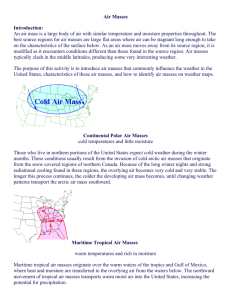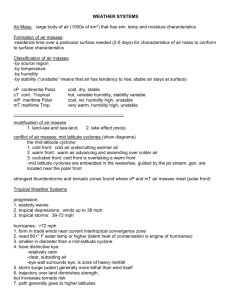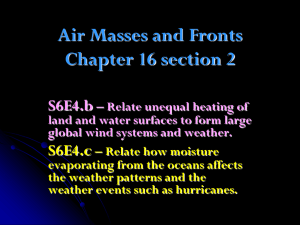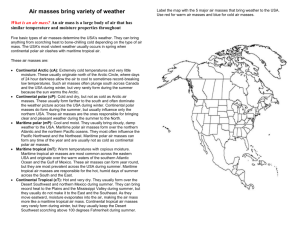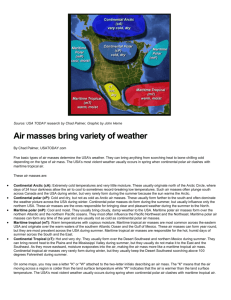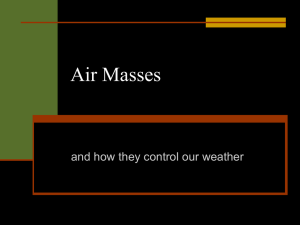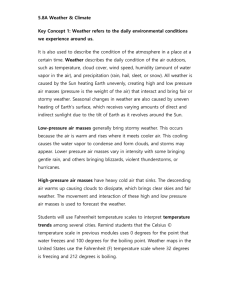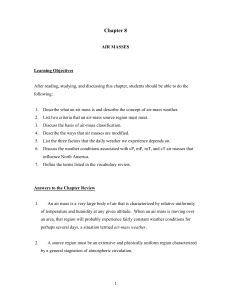Name: Air Masses Scaffolding Activity Introduction: An air mass is a
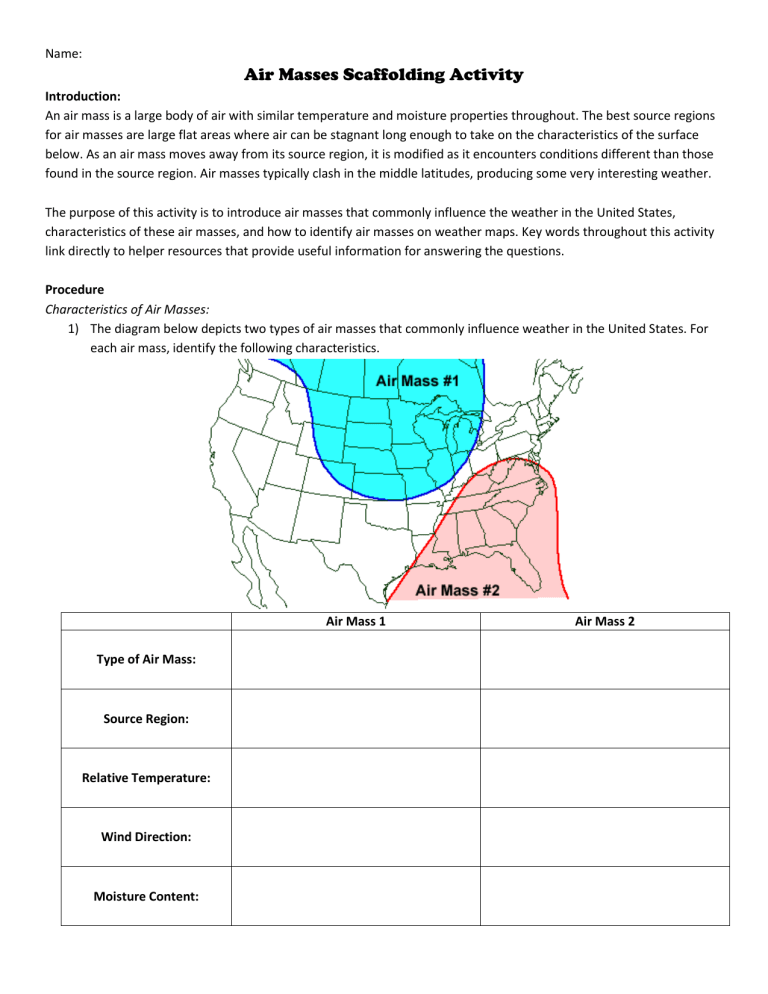
Name:
Air Masses Scaffolding Activity
Introduction:
An air mass is a large body of air with similar temperature and moisture properties throughout. The best source regions for air masses are large flat areas where air can be stagnant long enough to take on the characteristics of the surface below. As an air mass moves away from its source region, it is modified as it encounters conditions different than those found in the source region. Air masses typically clash in the middle latitudes, producing some very interesting weather.
The purpose of this activity is to introduce air masses that commonly influence the weather in the United States, characteristics of these air masses, and how to identify air masses on weather maps. Key words throughout this activity link directly to helper resources that provide useful information for answering the questions.
Procedure
Characteristics of Air Masses:
1) The diagram below depicts two types of air masses that commonly influence weather in the United States. For each air mass, identify the following characteristics.
Type of Air Mass:
Source Region:
Relative Temperature:
Wind Direction:
Moisture Content:
Air Mass 1 Air Mass 2
Find the Air Masses:
2) One way of identifying a tropical air mass on the weather map below is to look for a region of higher temperatures. To find a polar air mass, look for a region of colder temperatures. The image below is a map of surface observations and for this part of the activity, use the temperature field to draw two lines; a red line to outline the edge of a tropical air mass and a blue line to identify a polar air mass.
3) Now examine the regions you have outlined. Look particularly close at the wind barbs for wind direction and also examine the reports of dew point temperature. In question #1, you determined typical wind direction and dew point temperatures associated with a tropical air mass and a polar air mass. Use this additional information to again identify the tropical and the polar air masses in the diagram below. Label the edge of a tropical air mass with a red line and use a blue line to indicate the outer edge of a polar air mass.
4) Are there any differences between your first analysis and the second analysis? Explain why they are different (if they indeed are).


